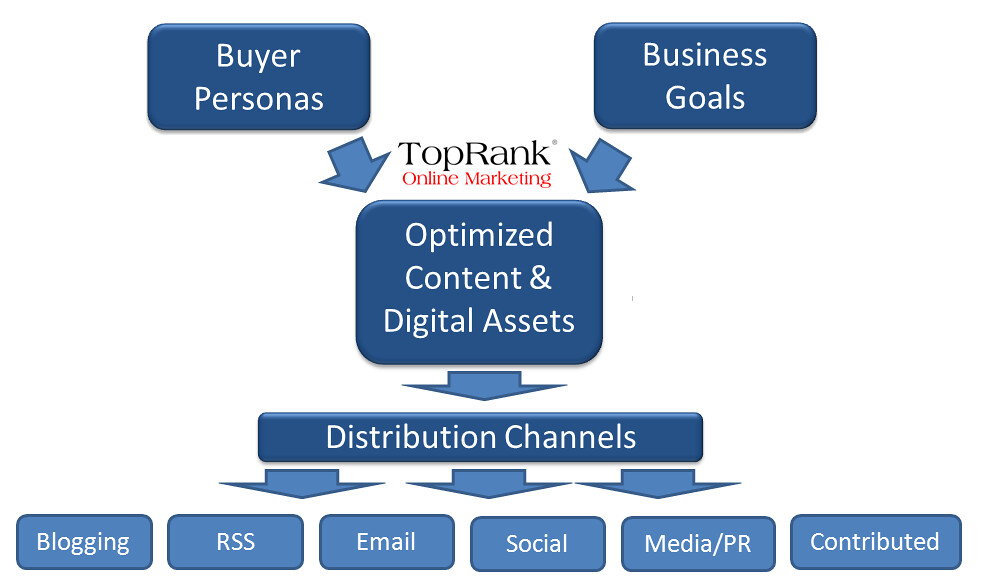Affiliate Marketing Without a Website
Affiliate marketing is a lucrative way to make money online, but did you know that you can do it without a website? This might sound surprising, but it’s true! You don’t need a website to promote products and earn commissions. In this article, we’ll show you how to become an affiliate marketer without a website.
Benefits of Affiliate Marketing Without a Website
Before we dive into the details of how to become an affiliate marketer without a website, let’s take a look at the benefits of doing so:
- Low startup costs. Without a website, you don’t have to worry about hosting fees, domain names, and website design costs.
- More flexibility. You can promote products on different platforms and reach a wider audience.
- Less time-consuming. Without a website, you don’t have to spend time creating and maintaining content.
- More opportunities. You can promote products on different platforms and participate in different affiliate programs.
Now that you know the benefits of affiliate marketing without a website, let’s take a look at how to become an affiliate marketer without a website.

Choosing the Best Platform
When it comes to affiliate marketing without a website, picking the right platform is crucial. Here are five efficient websites for affiliate marketing that you can use without a website:
The first step is to 1. Social media: How to Use it
Without a website, social media platforms are a fantastic way to advertise goods and earn commission. You can use websites like Facebook, Twitter, Instagram, and LinkedIn to market goods to your followers and earn commissions, according to a post on Zoho. Here are some pointers for using social media for affiliate marketing:
Build a following by doing this. You must develop a following of people who are interested in your niche in order to succeed on social media.
-Pick the appropriate products. Pick products that are pertinent to your audience and that you believe in.
-*Make interesting content. Create interesting content that will draw your followers and encourage them to learn more about the goods you’re promoting.
-Affiliate links should be used. ** To promote goods and earn commissions, use affiliate links.
The second section is located below. YouTube is a fantastic resource.
YouTube is a fantastic platform for affiliate marketing because it is the second largest search engine in the world. You can make videos that advertise goods and earn commissions, according to a post on Cloudways. Here are some pointers for utilizing YouTube for affiliate marketing:
-*Make videos of the highest caliber. ** Create high-quality videos that value your audience and advertise the goods you’re promoting.
-Pick the appropriate products. Pick products that are pertinent to your niche and that you believe in.
-Include links to affiliate stores. Include affiliate links in your video descriptions to promote goods and earn commissions.
-
3. EBooks
Without a website, eBooks are a fantastic way to advertise goods and earn commission. You can create eBooks that value your audience and that advertise the goods you’re promoting, according to a post on Voluum. Here are some pointers for using e-book marketing to affiliate:
-Pick the appropriate products. Pick products that are pertinent to your niche and that you believe in.
-*Make high-quality content. * * Create engaging content that speaks to your audience and promotes the goods you are promoting.
-Include links to affiliate stores. Include affiliate links in your ebook to advertise goods and earn commissions.
The following is the 4. In forums,
Without a website, forums are a great way to advertise goods and earn commissions. You can join forums that are related to your niche and market products to the members, according to a post on Authorityhacker. Here are some pointers for utilizing forums for affiliate marketing:
-Build a reputation. By giving the members value, you can establish a reputation on the forum.
-Pick the appropriate products. Pick products that are pertinent to the forum and that you support.
-Include links to affiliate stores. Include affiliate links in your forum posts to promote goods and earn commissions.
-
5. Word of Mouth: Word of Advice
Word of mouth is an effective marketing tool you can use to advertise goods and earn commissions without a website. You can tell your friends, family, and acquaintances about the products you’re promoting and earn commissions, according to a post on Zeropark. Here are some pointers for utilizing word of mouth for affiliate marketing:
-Pick the appropriate products. Pick goods that you think your friends and family will enjoy and that you believe in.
-Be truthful. * Be truthful about the goods you’re promoting and why you think they’re fantastic.
-Provide value. ** Provide value to your friends and family by recommending goods that will assist them in resolving a problem or meeting a need.

Finding Trustworthy Merchants
Working with reputable merchants is crucial when using affiliate marketing without a website. Here are some pointers for locating trustworthy merchants:
The first step is to 1. Find the Merchant by Doing Some Research
It’s crucial to do your homework on a merchant’s products before you begin promoting them to ensure their dependability. You can find out more about the retailer by reading this article on Zoho.
-Checking the merchant’s website. ** Look for details on the company, its products, and its policies.
-Reading reviews. ** Read reviews of the merchants and their goods to hear what other people are saying.
-Examining the complaints. ** On websites like the Better Business Bureau, look for complaints about the shop.
The second section is located below. Seek High-Quality Products
It’s crucial to advertise high-quality products that you believe in when it comes to affiliate marketing without a website. You can search for high-quality products by reading Cloudways.
-Researching the product. Make sure the product is something you believe in and that your audience will be interested in by conducting research on it.
–Checking the product’s reviews. ** To hear what other people are saying, look for product reviews.
-Trying the product. ** Make sure the product is of the highest caliber if at all possible by testing it yourself.
-
3. See the Commission Rate
The commission rate is a crucial aspect to take into account when it comes to affiliate marketing. You should look for a commission rate that is: Voluum, according to a post on the website:
-Fairness is appropriate. ** Look for a commission rate that is fair and compensates you for the effort you’re putting in.
Competitive positioning is important. ** Look for a commission rate that is competitive with competing products in your niche.
Generous is the best term. ** Look for a commission rate that is generous and will motivate you to advertise the product.
The following is the 4. Examine the terms and conditions of the affiliate program.
It’s crucial to read the terms and conditions of the affiliate program before you begin promoting a merchant’s goods. You should look for, according to a post on Authorityhacker.
-Cookie duration. ** Find a cookie that is long enough to give you the chance to earn a commission.
-Payment threshold. ** Look for a reasonable payment cap that you can reach.
Payment methods are listed below. ** Look for convenient payment methods.

abiding by Australian laws and regulations
It’s crucial to abide by Australian laws and regulations when it comes to affiliate marketing without a website. You should be aware of the following laws and rules:
The first step is to 1. Australian Consumer Law
A national law known as the Australian Consumer Law (ACL) protects consumers in Australia. If you’re promoting products as an affiliate, you must confirm that you adhere to the ACL, according to a post on Zoho. Here are a few of the ACL’s most crucial protections:
- **Offering false information and acting purposefully. ** You must refrain from engaging in behavior that is deceptive or misleading or that is more likely to mislead or deceive.
-Contract terms that are unfair. ** In your agreements with clients or merchants, you must not include unfair contract terms.
Consumer guarantees are included. ** The consumer guarantees listed in the ACL must be followed.
The second section of the Spam Act
Commercial electronic messages (CEMs) in Australia are governed by the Spam Act, a law. The Spam Act must be followed if you’re using email marketing as a component of your affiliate marketing strategy, according to a post on Cloudways. The Spam Act’s main provisions are listed below:
Consent is advised. ** Before sending a CEM, you need the recipient’s consent.
-Identify. ** In the CEM, you must clearly identify yourself.
-Un unsubscribe. * * To get recipients to unsubscribe from future CEMs, you must offer a solution.
The third privacy law is known as the 3.
Australia’s handling of personal information is governed by the Privacy Act. You must abide by the Privacy Act, according to a post on Voluum, if you’re using personal information as part of your affiliate marketing strategy. The Privacy Act’s main provisions are listed below:
-TheCollection. * * For your affiliate marketing endeavors, you must only gather the personal information required.
-Use, please. ** For the purposes for which it was gathered, you must only use personal data.
-closure. * * Unless you have the other person’s consent or are authorized by law, you are not permitted to release personal information.
The following is the 4. Taxation is important.
You must ensure that you abide by taxation regulations when it comes to affiliate marketing without a website in Australia. You might have to pay income tax on the commissions you receive as an affiliate marketer, according to a post on Authorityhacker. The following are some considerations:
-Keep records. As an affiliate marketer, keep records of your income and costs.
– Declaration your income * On your tax return, declare your affiliate marketing income.
–Claim deductions. ** For expenses related to your affiliate marketing initiatives, you might be eligible to claim deductions.

Leveraging Social Media
For affiliate marketers without a website, social media is a potent tool. Here are some pointers for utilizing social media to advertise affiliate products:
The first step is to 1. Pick the Appropriate Platform
It’s crucial to select the appropriate platform for your affiliate marketing activities when it comes to social media. Different social media platforms are better suited for various affiliate marketing strategies, according to a post on Zoho. The following are some illustrations:
-Facebook. ** Building a community around your affiliate products is easy on Facebook.
Instagram is the place to start. * * For promoting visually appealing goods, like fashion or beauty products, Instagram is a good platform.
-Twitter. ** Twitter is a good platform for promoting goods that are pertinent to current events or trending topics.
The second section is located below. Offer Value
It’s crucial to value your audience when promoting affiliate goods on social media. You can add value by using the following advice in a post on Cloudways:
-Sharing pertinent information. ** Give your audience useful information, such as advice or tutorials on the product, by sharing it.
-Offering special deals. ** Offer your social media followers exclusive deals or discounts.
-Engaging with your audience* ** By responding to comments and messages, interact with your audience.
-
3. BeAuthentic.
Being authentic is crucial when promoting affiliate products on social media. Your audience can tell when you’re being insincere, claims a post on Voluum. The following advice will help you be authentic:
-Use personal testimonials. ** Tell a personal story or experience about the product.
-Be truthful. * Be truthful about the benefits and drawbacks of the product.
-Be not pushy. ** When promoting the product, avoid being aggressive or pushy.
The following is the 4. abide by the rules
It’s crucial to abide by the rules when promoting affiliate goods on social media. Different social media platforms have different rules when it comes to affiliate marketing, according to a post on Authorityhacker. The following are some considerations:
- sever your affiliate relationship. ** In your social media posts, you should sever your relationship with the merchant.
-Don’t spam. Affiliate links shouldn’t be used to spam your followers.
-Respect the rules of the platform.* Respect the rules of the social media platform you are using.
Creating YouTube Videos
YouTube is a powerful platform for affiliate marketers who don’t have a website. Here are some tips for creating YouTube videos that promote affiliate products:
1. Choose a Niche
When it comes to YouTube, it’s important to choose a niche for your videos. According to a post on Zoho, choosing a niche will help you attract a specific audience and build a community around your videos. Here are some examples of niches:
- Fitness. Create videos about fitness routines, workouts, and nutrition.
- Technology. Create videos about the latest technology products and gadgets.
- Beauty. Create videos about makeup tutorials, skincare routines, and fashion.
2. Create High-Quality Content
When creating YouTube videos, it’s important to create high-quality content that will engage your audience. According to a post on Cloudways, you can create high-quality content by:
- Providing value. Provide value to your audience by sharing information that is useful or entertaining.
- Being authentic. Be yourself and share your personality with your audience.
- Being creative. Use creative techniques like storytelling or humor to engage your audience.
3. Promote Affiliate Products
When creating YouTube videos, it’s important to promote affiliate products in a way that is natural and authentic. According to a post on Voluum, here are some ways to promote affiliate products on YouTube:
- Product reviews. Create product review videos where you talk about the pros and cons of the product.
- Tutorials. Create tutorial videos where you show your audience how to use the product.
- Demo videos. Create demo videos where you demonstrate the product in action.
4. Follow YouTube’s Guidelines
When creating YouTube videos, it’s important to follow YouTube’s guidelines. According to a post on Authorityhacker, here are some things to keep in mind:
- Disclose your affiliate relationship. Disclose your affiliate relationship with the merchant in your video description.
- Don’t use misleading thumbnails or titles. Use accurate thumbnails and titles for your videos.
- **
Utilizing Online Communities
Online communities are a great way to promote affiliate products without a website. Here are some tips for utilizing online communities:
1. Find Relevant Communities
When it comes to online communities, it’s important to find communities that are relevant to your niche. According to a post on Zoho, here are some places to look for online communities:
- Facebook groups. Join Facebook groups that are related to your niche.
- Forums. Join forums that are related to your niche.
- Subreddits. Join subreddits that are related to your niche.
2. Engage with the Community
When you’ve found relevant online communities, it’s important to engage with the community in a way that is helpful and authentic. According to a post on Cloudways, here are some ways to engage with online communities:
- Answer questions. Answer questions that members of the community have about your niche or the product you’re promoting.
- Share your expertise. Share your expertise on topics related to your niche.
- Be helpful. Be helpful to other members of the community.
3. Promote Affiliate Products
When you’ve established yourself as a helpful member of an online community, it’s time to start promoting affiliate products. According to a post on Voluum, here are some ways to promote affiliate products in online communities:
- Share your affiliate link. Share your affiliate link with members of the community when it’s relevant to the conversation.
- Create helpful content. Create helpful content related to the product you’re promoting and share it with the community.
- Offer exclusive deals. Offer exclusive deals or discounts to members of the community.
4. Follow the Rules
When it comes to online communities, it’s important to follow the rules of the community. According to a post on Authorityhacker, here are some things to keep in mind:
- Read the community guidelines. Read the guidelines of the community before you start promoting affiliate products.
- Don’t spam. Don’t spam the community with affiliate links.
- Respect the community. Respect the members of the community and contribute in a meaningful way.

Using Email Marketing to Its Full Potential
Without a website, email marketing is a potent way to advertise affiliate products. The following advice will help you use email marketing:
The first step is to 1. Building an Email List
Building an email list is the first step in email marketing. There are several methods for creating an email list, according to a Zoho post:
Offer a lead magnet as well. In exchange for someone’s email address, offer a lead magnet, like a free ebook or report.
-Use a pop-up. ** To capture email addresses, use a popup on your social media or YouTube channel.
– Host a competition. ** Give people the email address they want to enter during a competition.
- Pick an Email Service Provider
Selecting an email service provider that is dependable and simple to use is crucial when it comes to email marketing. The following are some well-known email service providers, according to a post on Cloudways:
-Mailchimp. Popular email service provider Mailchimp offers free plans for small businesses and is simple to use.
-ConvertKit. For bloggers and content creators, ConvertKit is an email service provider.
-Aweber. ** Aweber is a provider of email services renowned for its first-rate customer service.
-
3. Create Engaging Emails
It’s crucial to write captivating emails that will keep your subscribers interested when it comes to email marketing. Here are some pointers for writing interesting emails, according to a post on Voluum:
Use a catchy subject line as well. Use a subject line that will grab the interest of your subscriber.
-Provide value. ** By including useful or entertaining information, you can give your subscribers value.
-Be personal. In the email, type in the name of your subscriber and use a conversational tone.
The following is the 4. PromoteAffiliate Products
It’s time to begin promoting affiliate products once you’ve built a relationship with your subscribers. Here are some strategies for promoting affiliate products in your emails, according to a post on Authorityhacker:
-*Make a product review. ** Make a product review and include your affiliate link in the email.
-Offer special deals. ** Give email subscribers exclusive discounts or deals.
-Include links to affiliate websites in your content. * Add affiliate links to your content, such as in a list of suggested products.
-
5. abide by the rules
Following the rules is crucial when it comes to email marketing. Here are some considerations to make, according to a post on Zeropark:
-Get permission. Before you begin sending your subscribers emails, make sure you have their consent.
*Offer an opt-out option. In every email you send, provide an opt-out option.
-Don’t spam. Affiliate links shouldn’t be used against your subscribers.

Leveraging Solo Ads
Without a website, solo ads are a cost-effective way to advertise affiliate products. The following advice will help you make use of solo ads:
The first step is to 1. Find a Reliable Solo Ad Provider.
Finding a dependable provider who can generate high-quality traffic is crucial when it comes to solo ads. Here are some characteristics to look for in a solo ad provider, according to a post on Zoho:
Reviews are a must. ** Look for opinions from other affiliates who have used their services.
Guarantees are a requirement. ** Look for providers who provide guarantees for their services.
Targeting options are listed. ** Find providers who provide targeting options based on your niche.
The second section is located below. Create a Landing Page that is HighConverting
A high-converting landing page that will turn visitors into customers is crucial when using solo ads. Here are some pointers for developing a landing page that is high-converting, according to a post on Cloudways
-Maintain a straightforward plan. Keep your landing page straightforward and laser-focused on the product you’re promoting.
– Include a strong call-to-action* * Make a strong call-to-action that motivates visitors to act.
-Be succinct and clear. ** In your messaging, be succinct and clear.
-
3. Test, Test, and Test
It’s crucial to test your campaigns to determine what works and what doesn’t when it comes to solo ads. Here are some considerations to make when testing your campaigns, according to a Voluum post:
- Test various providers. ** Test out various solo ad providers to see which ones produce the best results.
-Test various ad copy comparisons. * * See which ad copy drives the most clicks by testing various variations.
-*Test various landing pages. ** Test various landing pages to determine which ones turn the most visitors into customers.
The following is the 4. Keep an eye on your outcomes
It’s crucial to keep an eye on your results when running solo ads to see how your campaigns are doing. Here are some things to consider when monitoring your results, according to a post on Authorityhacker:
- Track your clicks. Keep track of your clicks and conversions using an ad tracker.
–Analyze your data. To determine which campaigns are producing the best results, examine your data.
–Make your campaigns more effective. Utilize your data to improve your outcomes.

In conclusion, consider this:
As you can see, without a website, it is possible to succeed as an affiliate marketer. You can reach a large audience and advertise affiliate products by using social media, online communities, email marketing, and solo ads.
Having a website, however, can be a significant advantage for your affiliate marketing company. You can benefit from having a website, according to a post on Authorityhacker.
–Build credibility and trust. * * You can establish yourself as a niche authority with the aid of a website.
-Increase organic traffic. You can increase organic traffic through search engines by using a website.
–Access the top affiliate networks and programs* * To join an affiliate network and program, you must have a website.
Therefore, even though it’s possible to do affiliate marketing without a website, having a website can elevate your affiliate marketing company.
Check out our other excellent content on GoodMoney Site if you want to learn more about affiliate marketing or online business. To assist you in succeeding in the world of online business, we provide a wealth of knowledge and resources.
Questions
Question: Who can become an affiliate marketer without a website?
Answer: Anyone with an online presence can start affiliate marketing without a website.
Question: What is the best way to promote affiliate products without a website?
Answer: Social media, email marketing, and online forums are some of the best ways to promote affiliate products without a website.
Question: How can I track my affiliate marketing progress without a website?
Answer: Use ad trackers like Voluum to monitor your campaign performance and track your clicks and conversions.
Question: What if I don’t have a large social media following for affiliate marketing?
Answer: You can still leverage social media by targeting specific niche communities and engaging with your target audience.
Question: How can I comply with Australian laws and regulations as an affiliate marketer without a website?
Answer: Make sure to disclose your affiliate relationship and follow the guidelines set forth by the Australian Competition and Consumer Commission.
Question: What if I want to expand my affiliate marketing efforts beyond social media and email marketing?
Answer: Consider creating a landing page or blog to build your online presence and generate organic traffic through search engines.
